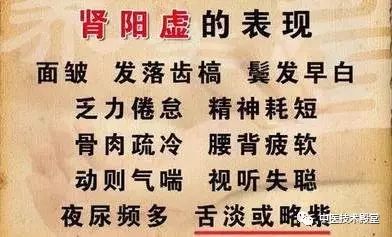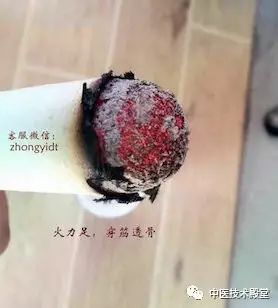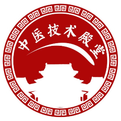
Currently, the topic of “tonifying” is widely recognized, regardless of age or gender. Anything that tonifies is considered good, especially those that tonify the kidneys. There are numerous methods and forms of kidney tonification, yet many feel overwhelmed by the options. Some people feel better after tonifying, while others feel worse, which reflects the TCM principle of differential diagnosis and treatment. Each method targets different constitutions and symptoms; using the right one can be effective, while the wrong one can harm the essence and deplete qi.
Friends often ask me what supplements they should take in middle age when they feel fine. Is it beneficial to take kidney tonifying herbs to enhance vitality? It seems that the concept of kidney tonification has deeply penetrated people’s minds. Ancient physicians believed that the kidneys are the foundation of one’s innate constitution, and any kidney issue requires tonification. Thus, there is a rationale behind kidney tonification. However, how to tonify correctly and effectively is a significant question.
In previous articles, kidney deficiency was categorized into Kidney Yang Deficiency, Kidney Yin Deficiency, and Deficiency of Both Yin and Yang. So how can one identify their type of kidney deficiency for targeted treatment?
First, let’s discuss Kidney Yang Deficiency. The most obvious manifestation of Kidney Yang Deficiency is a general aversion to cold or cold extremities, often accompanied by symptoms such as lower back and knee soreness, frequent urination, fatigue, fear of cold and wind, diarrhea, and swelling in the lower limbs. Additionally, Kidney Yang Deficiency can lead to infertility and sexual dysfunction in both men and women. Here, I will teach you a simple method to assess Kidney Yang Deficiency, which typically presents several characteristics.
First, a general aversion to cold, especially cold feet, which may not warm up even after soaking in hot water or a full night’s sleep. Particularly, the lower abdomen feels cold, often accompanied by chronic diarrhea and loose stools.
Second, frequent urination symptoms. Some people need to use the restroom just a few minutes after drinking a glass of water, or they frequently wake up at night. Clinically, some postpartum patients experience urinary incontinence, where even walking can lead to accidents, or jumping, laughing, or coughing can trigger incontinence, which is very distressing. After diagnosing Kidney Yang Deficiency, recommending Gui Fu Di Huang Wan (桂附地黄丸) for double dosage has shown excellent therapeutic effects.
The third assessment method is to palpate the calf muscles, particularly around the Chengshan (承山) acupoint. Individuals who exercise regularly, whether playing sports or running, tend to have well-developed calf muscles, indicating stronger kidney qi. Conversely, if palpating the calf reveals loose, inelastic skin, it can be concluded that there is Kidney Qi Deficiency. Additionally, some people notice a significant increase in energy after practicing Zhan Zhuang (站桩) for a week or two. Why does Zhan Zhuang have such beneficial effects? It actually contains a hidden method for strengthening the kidneys. During Zhan Zhuang, one should feel as if they are stepping on ants with their heels, slightly lifting the heels to engage the calves, which simultaneously mobilizes kidney qi and stomach qi, achieving a tonifying effect.
The fourth method to assess kidney deficiency is to observe the sensations in the lower back, as the lower back is the residence of the kidneys. After lying down for a full night’s sleep, check if the lower back feels sore, stiff, or weak. Alternatively, if standing in a fixed position causes gradual soreness in the lower back, resting or changing positions alleviates the pain. These are all manifestations of Kidney Yang Deficiency.
There are many warming tonics for Kidney Yang, most of which are warming herbs such as Fu Zi (附子), Rou Gui (肉桂), and Lu Rong (鹿茸). Among them, the most famous warming tonic for Kidney Yang is Gui Fu Di Huang Wan (桂附地黄丸), also known as Jin Kui Di Huang Wan (金匮地黄丸), which is a renowned formula for treating Kidney Yang Deficiency. Friends with Kidney Yang Deficiency can take this formula according to their symptoms and a doctor’s advice. Gui Fu Di Huang Wan is also an excellent remedy for diabetes and hypertension; when Kidney Yang Deficiency leads to elevated blood pressure, the complexion is often dark rather than rosy. Specific herbal prescriptions should be obtained from a local TCM physician based on individual constitution and differential diagnosis!
Additionally, here is a non-pharmaceutical method to tonify Kidney Yang—using moxa sticks to warm the Ming Men (命门) and Tai Xi (太溪) acupoints.
Moxa sticks are made from three-year aged mugwort, combined with various herbs such as Shan Jia (山甲), Dang Gui (当归), Chuan Xiong (川穹), Dan Shen (丹参), Yi Mu Cao (益母草), Ru Xiang (乳香), Niu Xi (牛膝), and Hong Hua (红花), among others. These moxa sticks are potent, with strong heat and penetration. For cold symptoms, moxibustion should be applied to the navel and kidney transport points.
【Acupoints】Ming Men (命门), Tai Xi (太溪), and for heat, add moxibustion to Yong Quan (涌泉).
【Moxibustion Method】Gentle moxibustion for 20-30 minutes at each acupoint.
【Treatment Course】Ten days for one course, with a three-day interval before starting the second course.

👇 Read the original article for more on moxa sticks!

